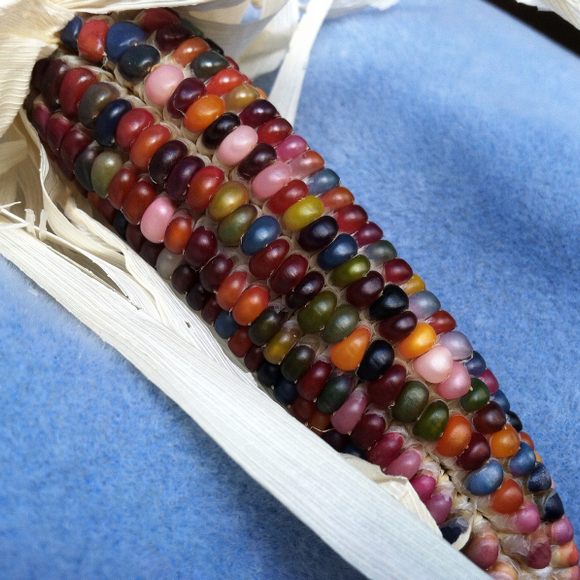Beautiful food has a way of catching internet attention, and glass gem corn is certainly eye-catching. When photos of the corn started circulating in 2012, people wanted to know: Where did it come from? What gave it its distinctive jewel tones? And could you eat it?
Soon, their questions were answered. Carl Barnes, a part-Cherokee farmer from Oklahoma, liked to experiment with ancestral corn varieties. After breeding several varieties together, the result was vibrantly-colored corn. The colored kernels ranged from vivid red to pale blue. Often, a single cob had a multitude of colors, each kernel the seed of a distinct plant. Through friends distributing the kernels and internet word-of-mouth, the lovely corn gained prominence on the seed scene. Though Barnes passed away in 2016, seed companies around the world still sell his jewel-like corn.
The fresher the corn is, the shinier its kernels. But since it’s flint corn and not sweet corn, it’s not too tasty when it’s fresh. However, it can be made into cornmeal, and is just fine as popcorn.
Written By
 Anne Ewbank
Anne Ewbank
Sources
- blogs.discovermagazine.com/80beats/2012/05/15/come-for-the-beautiful-gem-glass-corn-stay-for-a-dose-of-genetics/#.Wx_0XmRKh0s
- www.businessinsider.com/the-story-behind-glass-gem-corn-2013-10#the-story-of-glass-gem-corn-begins-with-an-oklahoma-farmer-named-carl-barnes-barnes-who-died-in-2016-was-half-cherokee-he-began-growing-older-corn-varieties-in-his-adult-years-no-one-is-exactly-sure-when-this-began-as-a-way-to-reconnect-with-his-heritage-1
- www.npr.org/sections/thesalt/2014/05/13/310459918/gardeners-gems-this-years-hottest-edibles-will-wow-the-neighbors















